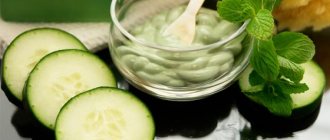The most common hand skin problems in winter and off-season
These include increased dryness, cracking, redness, rough skin, pimples, roughness and cold allergies.
The reasons are temperature changes and weathering. To retain heat, pores and blood vessels narrow, and the surface layers of the skin do not receive proper nutrition. Over time, the effect accumulates and the condition of the hands worsens significantly. Without additional care, cracks and pimples appear, which only deepen, causing pain. How to properly care for your hands in winter to avoid these problems?
Three basic rules for winter hand care
Cosmetologists include protection, regular hydration and nutrition among them.
- Protection
Basic hand protection is wearing gloves outdoors and while doing housework. In winter, give preference to warm gloves with added wool or fleece lining. If your fingers are very cold, it is better to choose mittens. Do not refuse such simple and effective protection, even if you plan to stay outside for no more than 15 minutes.
At home, also remember to protect your hands when working with water and chemical detergents. They have an aggressive effect on the skin of the hands and cuticles, quickly ruining the manicure.
If you still work without gloves, use warm water, not cold or hot. Cold will cause cracks and redness due to narrowed blood vessels and pores, and hot will quickly dissolve the protective lipid layer, making the skin of your hands dry and hypersensitive.
A simple and useful life hack for doing housework while wearing rubber gloves:
You can use the time you spend on housework to take extra care of your hands during the winter. Apply nourishing cream to your skin, put on thin plastic gloves, and then rubber gloves of your size. Do your usual housework, and at this time your hands will receive their dose of care and nutrition. Rubber gloves should not be large in order to hold thin polyethylene gloves well.
- Hydration
This stage is extremely important throughout the year. In winter you shouldn’t neglect it either. Cosmetologists recommend replacing the usual light creams and lotions with denser ones, often with elements of moisturizing and nutrition in one formula. Apply moisturizer after each hand wash and any contact with water.
How to care for your hands and feet in winter. Tips and tricks from the master
With the arrival of cold weather, many begin to notice changes in the condition of their skin. And these changes, most often, are far from for the better. Sudden temperature changes, exposure to cold air and wind, as well as room heating devices, prolonged exposure to thick clothes and shoes throughout the day, lack of vitamins and sun - all this affects the appearance and health of the skin of the hands and feet. Dryness, peeling, roughening of the skin, the formation of redness and microcracks, hangnails and a number of other seasonal troubles are most pronounced in the winter.
The skin of your hands is no less delicate than the skin of your face and requires a lot of attention. After all, hands are a kind of “business card”; they are one of the most important indicators of appearance, no matter whether you are a man or a woman. And don’t think that your hands will withstand adverse conditions without your help.
To maintain good condition of your hands, believe me, you need very little. First of all, this is soap. It depends on the choice of soap whether your hands will suffer or not. It would be good if it included essential oils or a cream base. After each hand washing, be sure to use nourishing or moisturizing creams. Use a hand scrub from time to time to ensure that the application of the cream has the greatest effect. Once a week, do a home wrap: thoroughly coat your hands with cream and put on cotton gloves. This is done, of course, at night.
To care for the cuticle, which dries much more than the skin of the hands, any cuticle oil is perfect. The manufacturers call it Cuticle Oil, and, in addition to its intended purpose, it will give your hands a pleasant smell. Also, before going outside in cold weather, prepare your hands for going out! Because the skin on your hands is thin, they bear the brunt of winter weather - more than any other part of the body. 15-20 minutes before leaving, you need to lubricate your hands with a fat-based cream and let it absorb. Excess, if any remains, carefully remove with a napkin. And be sure to wear gloves or mittens when going out into the fresh air.
Salon (specialized) procedures, the complex of which can be selected individually, depending on the condition of the skin, help to maintain the normal condition of the skin of the hands during the cold season. These can be various spa procedures with the removal of a layer of hardened cells, intense hydration and nutrition. Spa manicure is an excellent way not only to improve the condition of the skin of your hands, but also to relax, unwind, lighten your mood and overcome winter depression.
With the arrival of winter, “hot manicure” becomes more popular than ever. The procedure involves soaking the fingertips in a special heated balm. The balm for “hot manicure” contains substances that have a beneficial effect on the skin of the hands: paraffin, animal protein, vegetable and mineral oils, which, under the influence of temperature, begin to intensively penetrate the skin, nourishing and moisturizing it.
Hand care in winter can also be done using heated paraffin. Paraffin therapy is a very effective procedure, the immediate effect of which lasts for a week.
However, we should not forget that winter care is needed not only for hands. Legs need it no less, and maybe even more, than arms. And not so much for beauty, but for health.
If time permits, it is a good idea to take a relaxing or cooling foot bath every day, especially if your work requires prolonged standing or walking. Pour water at a comfortable temperature into an ordinary basin - from cool to almost hot. It should just cover the feet up to the “bone” above the heel. Dissolve foot bath oil in water, which does not leave greasy marks on the walls of the pelvis. It’s good if it contains extracts of sweet clover, horse chestnut or red grape leaves, which strengthen the walls of blood vessels. The cooling effect is achieved due to the presence of menthol or eucalyptus oils in the formulation. Take a bath for no more than 15 minutes. It is convenient to combine this procedure with watching the evening news to save personal time.
An excellent way to care for your feet and relax them is massage. You can knead your feet with your hands, make stroking movements, or trample objects with a relief surface. You can purchase a ball with a spiked surface for massage for this purpose. These are sold in children's toy stores, fitness stores, and even in pet stores. Of course, you can roll an ordinary flat ball with your foot, but a studded ball works much more effectively, not only massaging the skin of the foot, but also having a targeted effect on other systems of the body. Particular attention should be paid to massaging the heel area.
The final stage is applying moisturizer. The skin should be slightly damp to ensure the effect lasts. If you have excessively dry or flaky skin, you need to choose a thicker product. You can also carry out a similar wrapping procedure as for the hands, which was described above.
You can get a home pedicure once a week. If necessary, after preliminary steaming, treat the flaky skin with a special pedicure file. The main thing is not to overdo it, remove only the dead stratum corneum and not disturb living cells, so as not to provoke the appearance of cracks and calluses. For those who are afraid of overdoing it, you can replace the file with a scrub. After the procedure, be sure to lubricate the inner and outer surfaces of the feet with a nourishing cream using massaging movements.
In winter, we pay special attention to the length of the nail plates on the toes. Preference should be given to the shortest possible nail length. If the nails are so strong that they cause pressure and discomfort when wearing shoes, they should be trimmed with scissors or special pliers. In some cases, filing with a file will suffice. Try not to make the edge of the nail plate round or too beveled - this provokes such an unpleasant and painful phenomenon as an ingrown nail. If the nail does become ingrown, do not try to deal with the problem yourself; consult a specialist.
The main means of foot care, of course, in winter, has always been and remains a visit to the master for a salon pedicure at least once every month and a half. In the salon, the master can offer a whole range of foot care procedures, and several types of pedicures: from regular classic to Spa... Then the resulting effect will not be difficult to maintain at home.
As you can see, winter skin care for hands and feet is quite simple and, with regular use, gives good results. Don't be afraid of difficulties and don't be lazy. Love and care for yourself from the tips of your fingers to the tips of your toes. Then your arms and legs will delight you all year round... Regardless of the weather outside.
Night hand care
Busy lifestyles can distract you from taking proper care of your hands during the day, which means you can take better care of them at night. Polyethylene overnight hand wraps will do their job, and in the morning you will admire beautiful velvety skin.
For wraps you will need a nourishing fatty cream, a night nourishing hand mask or olive oil (up to 1 tsp). Before going to bed, apply any of the products to your hands, put thin plastic gloves on top, and then terry cosmetic gloves. In the morning after washing, apply your usual nourishing or protective cream.
Nourishing and moisturizing hand masks in winter
More intensive hydration and nutrition of the skin of the hands will be provided by masks for winter care. They can be purchased at the store or prepared at home from a number of ingredients. Cosmetologists recommend applying hand masks 1 or 2 times a week as needed.
For homemade masks, use glycerin, olive, coconut or shea butter as a base. They simultaneously nourish and moisturize the skin. Additional popular ingredients are honey, egg, oatmeal, potatoes, milk, lemon. By mixing the ingredients in different proportions, you will get excellent options for nourishing and moisturizing masks for the winter season.
It is recommended to apply the mask to slightly steamed skin of the hands to improve its permeability, and then cover with polyethylene and a terry towel or terry mittens. The optimal application time is from 15 to 40 minutes. After removing the mask, lubricate your hands with cream and do not go outside for at least half an hour.
With the onset of frosty days, the skin of your hands has a hard time. Thin and extremely vulnerable, it needs stable and reliable protection even if you go outside wearing warm gloves. Dryness, roughness and flaking of the skin are the most common phenomena in cold weather.
Fatty nourishing and moisturizing creams enriched with plant extracts and natural oils can protect against such troubles. Cosmetologists advise carrying such products in your purse and, of course, purchasing a jar for your home and office. It is wise to lubricate your hands with cream after each wash - the water in the tap today is such that it dries and tightens the skin. Intensive winter hand care is impossible without nourishing masks. If your heart “belongs” to ready-made cosmetics, then opt for formulations containing argan oil, the substance allantoin, as well as cocoa or jojoba butter. They amazingly soften and quickly restore the epidermis.
It is important to remember that hands (and especially when there is a difference in temperature in the room and outside) are most likely to age. Masks and hand creams enriched with vitamins C and E will help slow down this annoying process. Paraffin masks are an excellent assistant in this matter. You can make them both in beauty studios and, if desired, at home.
Take a package of purified cosmetic paraffin and melt it in an enamel container in a water bath. While the hot mixture cools to a comfortable temperature, clean your hands with a scrub made from yogurt and fine salt or ground coffee grains. After this, lubricate your hands with a base cream with a moisturizing effect and immerse your hands in liquid paraffin for 15-20 seconds. Hold your hands in the air for a minute, then immerse them again for a few seconds. And repeat this 4-6 times. “Hide” the handles covered with a thick paraffin layer in thread gloves or terry mittens. After twenty minutes of beneficial heat, remove the “clothes” and then the frozen paraffin film. If desired, after the warming procedure, you can lubricate your wrists and fingers with any vegetable oil.
To ensure your hands get through the winter “safely,” pamper them with a softening and nourishing mask of oatmeal and kiwi. Peel the fruit and grind its emerald pulp. Just brew a handful of oatmeal in a bowl of boiling water (1 cup). Once the oatmeal is warm, combine with kiwi puree and add a couple of dessert spoons of olive oil. Pamper your brushes with this mask for about 15 minutes, and after rinsing, enhance the effect with herbal cream.
A mask made from sour cream and potatoes intensively nourishes the skin of your hands. Prepare regular boiled potato puree (with a piece of butter or a spoonful of vegetable oil). Add sour cream (1:1) to the warm mixture and beat. Apply the puree to your hands, or you can simply immerse your hands directly into a saucepan or bowl with a warm mixture for 10 minutes. After the procedure, chamomile or glycerin creams will be useful.
For deeper, more powerful nourishment and hydration, try a kelp (brown algae) mask. The active substances of the sea plant quickly “make their way” into the deepest layers of the dermis, restoring the hydrolipid balance from the inside. The unique microelements contained in kelp will support the speed of cellular metabolism when your hands are exposed to the cold, and will also act as a skin protector.
All you need is a couple of tablespoons of dry seaweed, crushed in a coffee grinder. They need to be filled with water until they swell, and either cosmetic clay or aromatic oils should be added to the finished pulp at your discretion. This mask is applied to the skin for a period of 15 to 30 minutes. You can supplement your care with a ready-made serum with hyaluronic acid; it is recommended to apply it immediately after washing off the mask.
Winter facial skin care
Hair lamination with gelatin: how to do it at home
Spa treatments for hands and nails in winter: paraffin therapy and Brazilian manicure
When you need to lift your spirits in cold weather while still caring for your hands, consider paraffin therapy and Brazilian manicures offered at spas. The first will quickly restore the skin, and the second will quickly restore the nails and cuticles.
Paraffin therapy will moisturize the skin of your hands and restore its natural healthy state. The procedure speeds up metabolism, increases blood circulation, removes toxins and relaxes. After it, a nourishing cream is usually applied. Skin looks 5-10 years younger.
Brazilian manicure is a type of European, unedged manicure. To perform it, a one-time set of an orange stick, a nail file and special gloves with cream filler is used. The cream contains tea tree oil for nourishing and moisturizing, allantoin, witch hazel, emollient, keratin and calcium for strengthening and whitening nails. The master puts on gloves with cream, and after softening the cuticle, cuts off the tips of the gloves and simply moves the cuticle with an orange stick. You get the most delicate skin on your hands and a well-groomed manicure as a result.
Additional cuticle care in winter
Like the hands in general, the cuticle requires no less careful care. The skin here is thin, prone to drying out and flaking. Exposure to cold, moisture and temperature changes affects it first.
Cosmetologists recommend systematically caring for the cuticle, especially in winter. Apply vitamin E, tea tree, or chamomile oil two to three times daily. Keep it within reach.
When you don't have cuticle oil on hand, use your fingertip to take small drops of nourishing cream and apply around the nail along the cuticle line. Leave for a couple of minutes and then rub. Combine this same technique with your usual ritual of applying cream to additionally nourish and moisturize the cuticle throughout the day.
Don't forget about regular manicures and strengthening baths for your hands and nails with oils and herbal extracts.
All of the above techniques can be an excellent set of winter hand and nail care in your arsenal. Maybe we forgot something? Or do you have your own proven life hacks for caring for your hands in cold weather? Write to us in the comments.
Folk skin care products
Hand care at home
Traditional medicine offers a large selection of very simple recipes for giving hands and nails vitality and beauty.
Creams
From easily accessible products you can prepare effective homemade creams suitable for daily care of dry and problematic hand skin:
- a mixture of glycerin, ammonia, water and a little cologne;
- lemon juice, flax oil, egg yolk, spoon of honey;
- rose petals from 1 bush and 1 tablespoon of melted lard;
- ripened zucchini, a couple of teaspoons of oatmeal, 1 spoon of milk and 2 spoons of sour cream.
Creams can be applied several times a day for greater effect.
Baths
Various baths are ideal for moisturizing dry skin, after which your hands look smooth and well-groomed. The most effective formulations for this procedure are as follows:
- decoctions based on medicinal herbs: chamomile, sage, St. John's wort, celery, nettle;
- oatmeal steamed in boiling water;
- cosmetic paraffin;
- glycerin and ammonia;
- heated olive oil;
- 1 teaspoon of starch, brewed with a glass of boiling water.

Baths have a good effect on the skin of the hands
The duration of the bath is 15-20 minutes, after which the hands are blotted with a towel and lubricated with nourishing cream.
Masks
This procedure helps restore depleted skin of the hands and nail plates, as well as moisturize them. The simplest recipe is to mix mashed potatoes, milk and olive oil, you can add lemon juice.
It is also easy to prepare an egg-flaxseed nutritious mixture for hands from tbsp. spoons of honey, flaxseed oil and lemon juice. Curd masks are made from cottage cheese and olive oil, oil masks are made from olive oil and orange essential oil.
Leave the mixture on your hands for an hour and a half, after which it is washed off and cream is applied to your hands.
Note! You must wear cotton gloves on the mask layer.
Scrubs
Scrubs are good for cleansing the skin of your hands from dead cells. They can be prepared based on:
- The most popular peeling is done using coffee: ground beans with vegetable oil, you can add liquid vitamins “a” and “e”;
- sugar, soda or sea salt are mixed with olive oil, sour cream or honey.
Using a scrub, massage the back of the hands (as well as the cuticles) for 10-15 minutes, the frequency of procedures is a couple of times a week.









